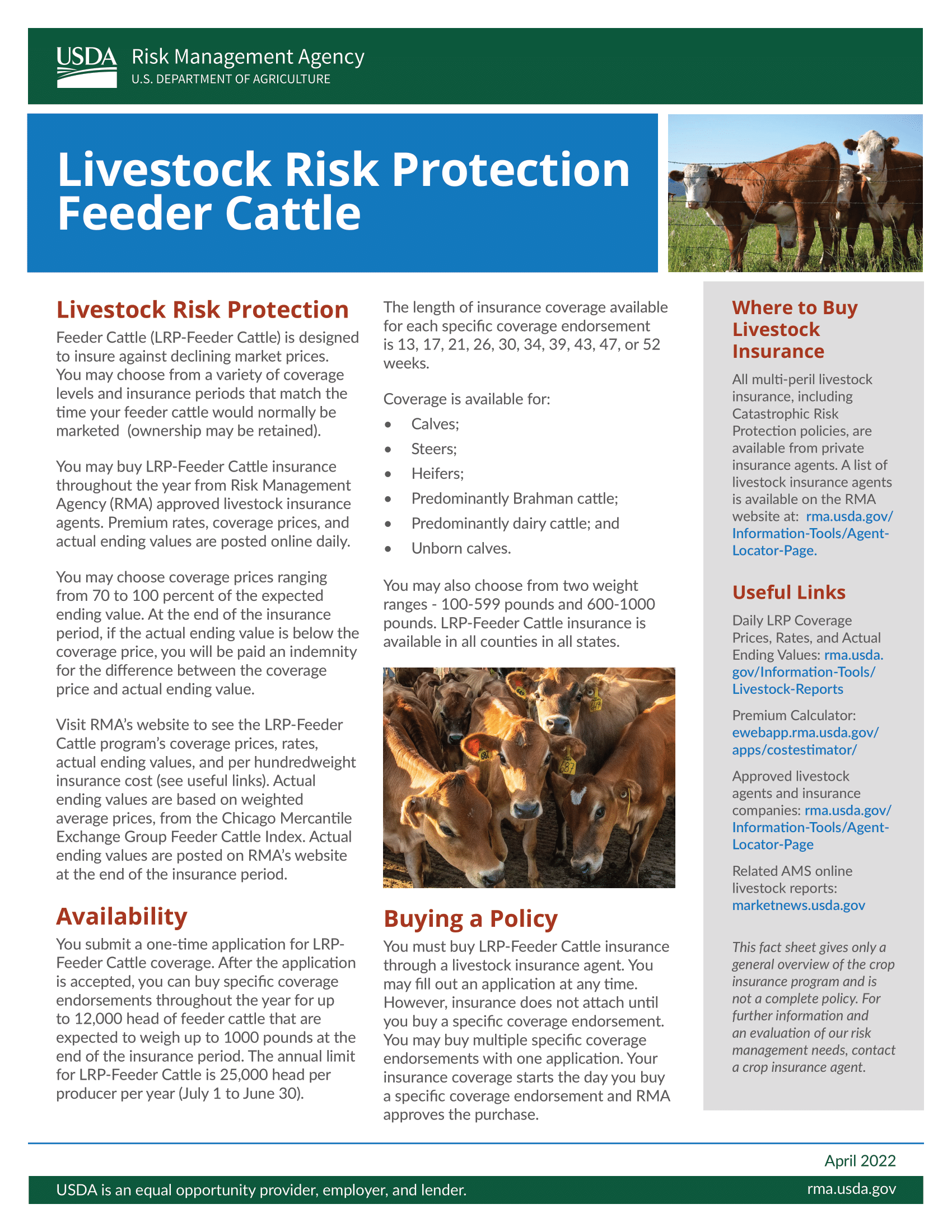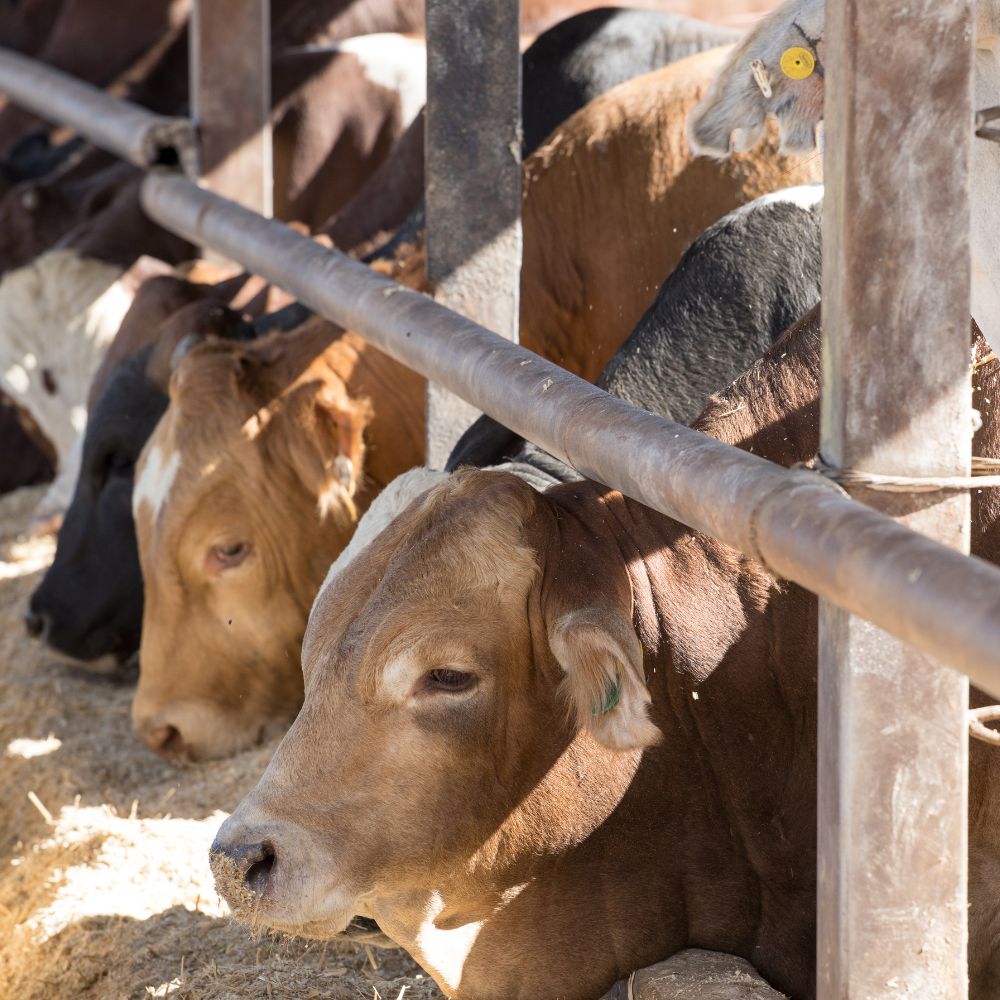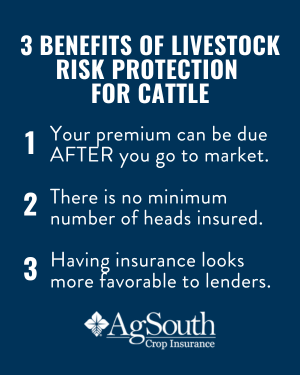Comprehending Livestock Risk Security (LRP) Insurance Policy: A Comprehensive Guide
Navigating the realm of animals threat defense (LRP) insurance policy can be a complicated venture for several in the agricultural industry. From exactly how LRP insurance coverage works to the different coverage options readily available, there is much to reveal in this thorough overview that could potentially form the way animals manufacturers approach risk administration in their businesses.

Just How LRP Insurance Coverage Functions
Sometimes, recognizing the technicians of Livestock Danger Security (LRP) insurance policy can be complex, yet breaking down how it works can give clarity for breeders and farmers. LRP insurance is a threat management tool designed to protect animals manufacturers versus unanticipated cost declines. It's essential to note that LRP insurance is not an income warranty; instead, it focuses exclusively on cost risk protection.
Qualification and Coverage Options

When it comes to insurance coverage options, LRP insurance policy provides producers the versatility to select the coverage level, coverage duration, and recommendations that best fit their risk monitoring requirements. By comprehending the eligibility requirements and protection alternatives available, animals producers can make educated choices to manage danger efficiently.
Pros and Cons of LRP Insurance Coverage
When assessing Livestock Danger Security (LRP) insurance, it is crucial for animals manufacturers to evaluate the downsides and benefits inherent in this danger management device.

One of the primary advantages of LRP insurance is its ability to offer protection against a decline in animals rates. Additionally, LRP insurance offers a degree of versatility, permitting producers to customize protection levels and policy periods to match their certain requirements.
One limitation of LRP insurance policy is that it does not secure against all types of risks, such as illness episodes or natural catastrophes. It is important for manufacturers to carefully evaluate their specific risk direct exposure and monetary circumstance to determine if LRP insurance coverage is the ideal risk monitoring device for their operation.
Recognizing LRP Insurance Policy Premiums

Tips for Making Best Use Of LRP Perks
Optimizing the advantages of Livestock Risk Protection (LRP) insurance coverage needs calculated preparation and positive threat management - Bagley Risk Management. To maximize your LRP insurance coverage, think about the following ideas:
Consistently Analyze Market Problems: Keep informed about market patterns and cost variations in the livestock sector. By keeping track of these aspects, you can make enlightened decisions about when to purchase LRP coverage to safeguard against prospective losses.
Set Realistic Coverage Levels: When selecting coverage degrees, consider your manufacturing prices, market price of animals, and possible threats - Bagley Risk Management. Setting realistic protection degrees makes certain that you are effectively secured without paying too much for unneeded insurance coverage
Diversify Your Coverage: Rather of depending solely on LRP insurance coverage, think about expanding your danger monitoring strategies. Combining LRP with various other danger monitoring devices such as futures contracts or choices can offer extensive coverage versus market unpredictabilities.
Evaluation and Adjust Insurance Coverage Regularly: As market problems change, occasionally evaluate your LRP coverage to guarantee it lines up with your current threat exposure. Readjusting protection degrees and timing of purchases can aid enhance your threat security strategy. By complying with these tips, you can optimize the benefits of LRP insurance and guard your livestock procedure versus unexpected dangers.
Final Thought
In verdict, animals danger protection (LRP) insurance coverage is a valuable tool for farmers to handle the financial risks related to their livestock procedures. By comprehending how LRP works, qualification and insurance coverage options, in addition to the pros and cons of this insurance policy, farmers can make informed decisions to safeguard their livelihoods. By thoroughly considering LRP premiums and carrying out strategies to maximize benefits, farmers can alleviate potential losses and ensure the sustainability of their operations.
Livestock producers interested in obtaining Animals Danger Defense (LRP) insurance can discover an array of qualification criteria and coverage options tailored to their particular livestock operations.When it comes to coverage options, LRP insurance policy supplies manufacturers the versatility to select the protection level, insurance coverage period, and endorsements that ideal fit their threat administration requirements.To comprehend the intricacies of Animals Threat Protection (LRP) insurance dig this completely, recognizing the variables influencing LRP insurance policy costs is crucial. LRP insurance premiums are established by numerous aspects, including the coverage degree picked, the anticipated price of animals at the end of the insurance coverage period, the type of animals being guaranteed, and the length of the protection period.Testimonial and Change Insurance Coverage Routinely: As market problems change, regularly examine your LRP coverage to guarantee it aligns with your existing threat exposure.